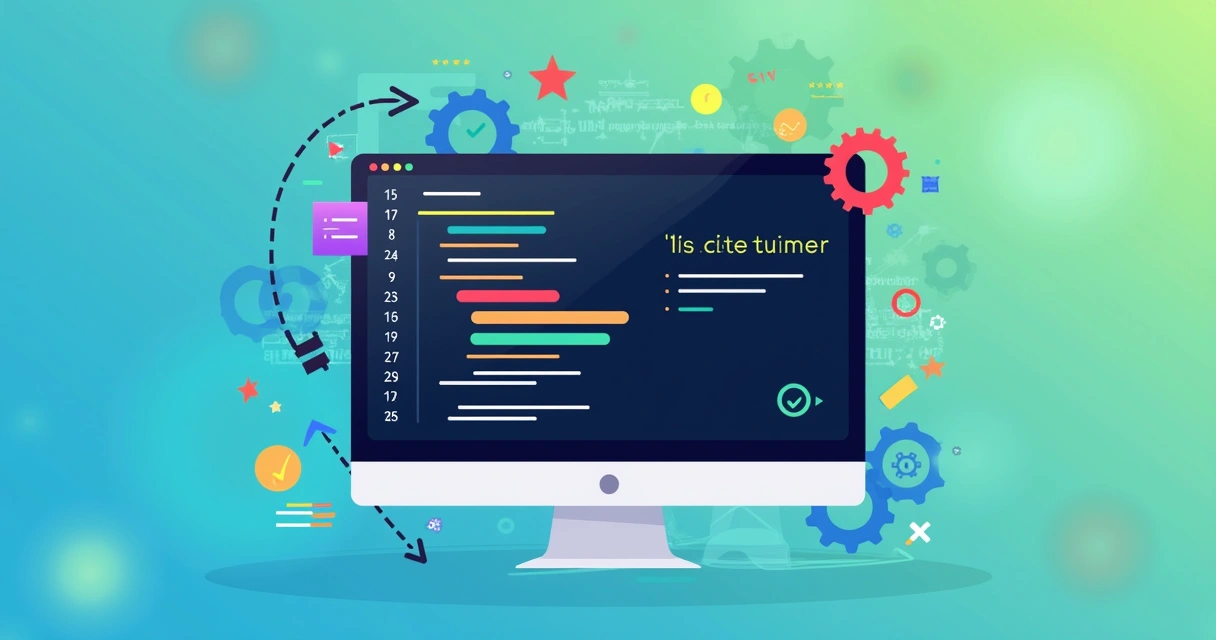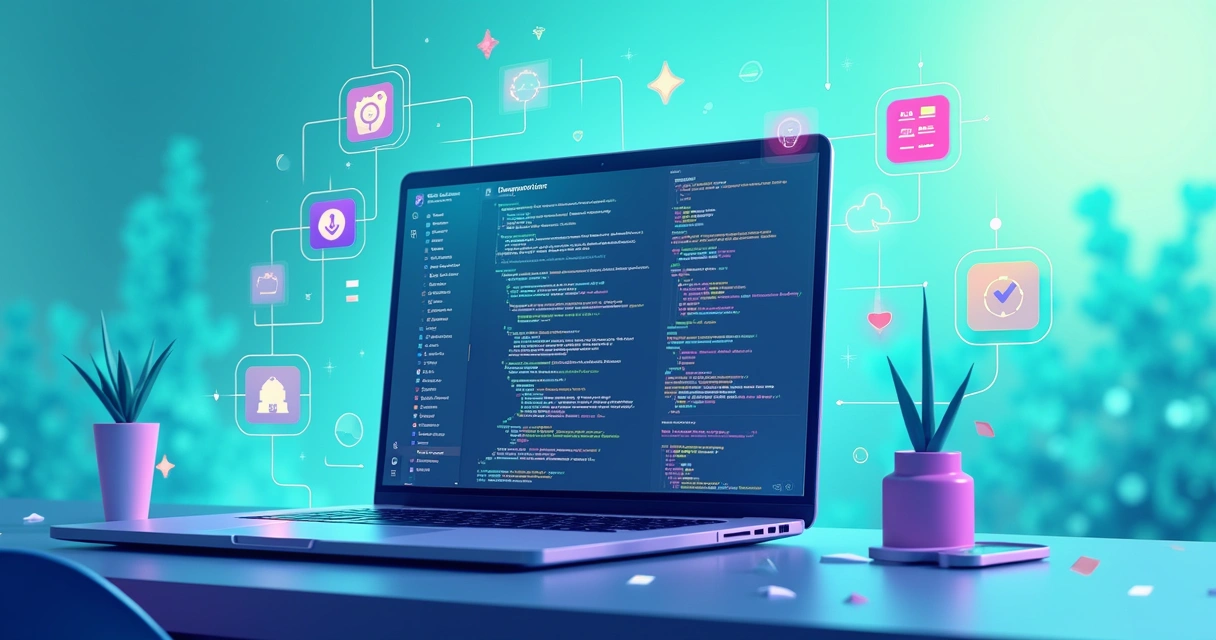
Understanding Java 21 and Its Importance in Modern Development
Java 21 brings exciting features that can make your coding experience smoother and more enjoyable. It’s essential to know what’s new and how it can help you. Here are some highlights:
- Virtual Threads: They simplify how you handle multiple tasks at once, making your programs run efficiently.
- Record Patterns: These help you manage data more clearly, so your code is easier to read and maintain.
- Better pattern matching allows for simpler ways to check types in your code.
- Enhanced performance means your applications can run faster, leading to happier users.
By diving into Java 21, you can build stronger applications that meet today’s fast-paced needs.
 Java 21 Features Overview and New Capabilities
Java 21 Features Overview and New Capabilities
Java 21 brings exciting features that can make your programming experience much better. These updates are designed to help developers like you write cleaner, faster, and more efficient code. Here’s what you need to know:
- Virtual Threads: These are a fantastic addition for managing multiple tasks at once. Imagine being able to run hundreds of threads without slowing down your application. This means your software can scale easily and handle more users without a hitch.
- Record Patterns: This feature helps you quickly access and manage data structures. Instead of writing long and complicated code to extract values, you can simply use concise patterns. It not only saves time but also makes your code easier to read.
- Improved Pattern Matching: This enhancement allows you to check types more easily, reducing repetitive code. You can focus on what matters and write more expressive code.
With these updates in Java 21, your applications are bound to perform better. You’ll not only enjoy the benefits of simpler code but also improve your overall productivity. The goal is to make your life easier as a developer, allowing you to create amazing applications with less hassle!
Exploring Java 21 Virtual Threads
Java 21 brings an exciting feature called Virtual Threads, which can transform how we manage tasks in our applications. Imagine if you could run many tasks simultaneously with less hassle—that’s what Virtual Threads offer. This means your apps can handle more users or processes efficiently, improving overall performance.
Virtual Threads allow for easier task management without the usual heavy lifting that comes with traditional threads. This upgrade can lead to a noticeable boost in speed and a drop in memory usage. If you’ve ever struggled with keeping track of multiple threads, you’ll find this change a breath of fresh air.
Let’s break down how you can start using Virtual Threads:
- Easy Creation: You can create a Virtual Thread with just a simple command, making it straightforward for developers.
- Faster Context Switching: Switching between threads happens quickly, meaning your app can run faster and smoother.
- Familiar Tools: You can still use concepts like
Runnable, making the transition easier and more intuitive.
Virtual Threads aren’t just a technical upgrade; they change how we think about concurrency. Instead of worrying about managing many threads, you can focus on building features that matter. This innovation is here to simplify your programming life, allowing you to create responsive applications without the usual headaches.
 Utilizing Java 21 Record Patterns Effectively
Utilizing Java 21 Record Patterns Effectively
Java 21 brings an exciting new feature called Record Patterns, designed to make handling data easier and clearer for developers. If you’ve ever struggled to extract values from objects, you’re in for a treat. Record Patterns allow you to access specific fields without writing tons of extra code, saving you time and effort.
Here are some key points about how you can benefit from using Record Patterns:
- Simplified Value Extraction: With Record Patterns, you can grab values from record classes almost effortlessly. For instance, if you have a record for a person, you can easily match and get the person’s name and age, making your code more straightforward.
- Less Boilerplate: One of the best parts about Record Patterns is that they reduce repetitive code. Instead of writing long, complex logic to pull data, you can express what you need simply and clearly.
- Improved Type Safety: Record Patterns also come with built-in checks for types. This means your code is less likely to run into unexpected errors, which keeps your applications running smoothly.
Imagine this scenario: you have a record that stores a person’s info. Using Record Patterns, you can directly access the fields without fuss. It’s all about making your code cleaner and easier to read.
By leveraging Record Patterns in your projects, you’re not just adopting a new feature; you’re also committing to writing better code. That’s a win-win for any developer!
Benefiting from Java 21 Pattern Matching
As we dive into the new features of Java 21, one that stands out is the concept of Pattern Matching. If you’ve ever worked with objects and had to check their types repeatedly, you know how frustrating this can be. Before Java 21, you’d often use long, complicated checks with instanceof, making your code bulky and harder to read.
So, what does Pattern Matching bring to the table? It simplifies these checks, allowing you to write cleaner and more understandable code. Imagine you have an object, and you want to determine its type. Instead of multiple lines of code, you can now condense this into a much simpler structure.
This not only makes your code look better but also enhances its safety. Fewer lines mean fewer chances for mistakes that could lead to runtime errors, which is crucial for keeping your applications running smoothly. Here are some of the key benefits:
- Cleaner Syntax: Pattern Matching reduces repetitive code, allowing you to focus on the logic instead of the checks.
- Improved Readability: With a straightforward structure, it’s easier for you and others to follow your code, even after some time has passed.
- Enhanced Safety: The built-in checks minimize the risk of unexpected errors during execution.
In short, embracing these updates in Java 21 can significantly improve your coding experience. By leveraging Pattern Matching, you’ll create better, faster, and more reliable applications.
 Java 21 Improvements vs Java 17 and 11
Java 21 Improvements vs Java 17 and 11
Java 21 brings some exciting changes that can make your programming life much easier. If you’ve used Java 11 or 17, you’ll notice some real improvements that can help you write code more simply and efficiently.
One of the standout features of Java 21 is the introduction of Virtual Threads. This new approach to concurrency lets you manage multiple tasks more easily. Imagine being able to run hundreds of small tasks simultaneously without the usual hassle of managing threads!
Another great addition is the Record Patterns. While Java 17 introduced records for simple data classes, Java 21 takes it a step further by allowing direct access to fields through patterns, making it easier to handle your data.
Here are a few important features to keep in mind:
- Cleaner Code: The new pattern matching improvements reduce boilerplate code, making your programs easier to read.
- Improved Performance: Java 21 is optimized for speed, which means your applications can run faster and be more efficient.
- Enhanced Developer Experience: With more intuitive features, you can focus more on your code rather than the complexities of the language.
Upgrading to Java 21 not only keeps you current but also helps you write better applications.
How to Upgrade to Java 21: A Migration Guide
Upgrading to Java 21 can be a lot easier than you think. With the right plan, you can make the switch without too much hassle. Here’s how you can do it smoothly:
- Check Compatibility: Before anything else, make sure your app and its dependencies work with Java 21. Look at the libraries you use; many have updates that ensure they work with this new version.
- Backup Your Code: Always create a backup of your current code. This step is crucial because if anything goes wrong during the upgrade, you can easily go back to the previous version.
- Update Dependencies: Go through your project’s dependencies and update them. New versions often come with important fixes and improvements that enhance performance.
- Test Your Application: After upgrading, spend time testing your application thoroughly. Look out for any unusual issues that might arise, as these can stem from changes or new features in Java 21.
- Explore New Features: Don’t forget to take advantage of new features like Virtual Threads and Record Patterns. Gradually implementing these features can help you write cleaner and more efficient code.
By following these steps, you can confidently upgrade to Java 21. This migration isn’t just about moving to a newer version; it’s a chance to enhance your code and leverage exciting new tools to improve your programming experience.
 The Impact of Java 21 on Enterprise Application Development
The Impact of Java 21 on Enterprise Application Development
Java 21 introduces some exciting changes that can really make a difference in how we build applications today. If you’re a developer or just curious about technology, these updates are worth your attention. One of the major highlights is the introduction of Virtual Threads. This feature allows you to manage multiple tasks more easily, meaning you can have a lot of users or tasks running without the usual headache of threading issues. Imagine being able to support thousands of users without slowing down your application!
Another important update is the introduction of Record Patterns. This makes it simpler to work with data. Instead of writing tons of repetitive code to extract information, you can now get what you need in a more straightforward way. This not only saves time but also helps you write cleaner and more readable code, which is something everyone appreciates.
Here are a few key benefits of using Java 21:
- Scalability: Easily build applications that can grow along with your business needs.
- Readability: Write simpler code, making it easier for teams to collaborate effectively.
- Performance: Deliver faster and more responsive applications for your users.
In summary, Java 21 equips you with powerful tools to enhance your development experience. By leveraging these features, you can create applications that are more efficient, easier to manage, and ready to meet modern demands.
Best Practices for Java 21 in Production
When it comes to using Java 21 in your projects, there are some important tips to ensure everything runs smoothly. Understanding the new features will make a big difference. For example, the introduction of Virtual Threads allows you to manage many tasks without overwhelming your system. This can lead to better performance and more responsive applications.
Here are a few best practices you should consider:
- Test Thoroughly: Before going live, test your application rigorously. Simulate different scenarios to see how it handles the new features.
- Monitor Performance: Use tools to track how your application is performing in real-time. This is essential, especially with the new threading model.
- Stagger Deployments: Instead of launching changes all at once, roll them out gradually. This way, you can identify issues early without affecting all users.
- Update Documentation: As your team embraces Java 21, keep your documentation current. Clear guides can help everyone stay on the same page.
- Encourage Code Reviews: Regular code reviews help catch mistakes early. It’s a good opportunity to discuss the best ways to use new features.
By following these steps, you’ll be better equipped to take advantage of Java 21’s strengths and deliver high-quality applications.
Common Questions About Java 21: FAQ
Java 21 brings exciting changes that can enhance your programming experience. If you’re curious about what to expect, here are some key points to consider:
- Virtual Threads: This feature makes handling multiple tasks easier. With virtual threads, your application can run many tasks simultaneously without the usual complexity, which means smoother and faster performance.
- Record Patterns: These allow you to extract data easily from records. Instead of writing lengthy code, you can match data with clear and concise statements, making your code more readable.
- Performance Improvements: Java 21 comes with optimizations that lead to faster execution times. You’ll notice less memory usage, which is great for running applications efficiently.
- Framework Compatibility: Many popular frameworks have already adapted to support Java 21. Before updating, however, it’s a good idea to check if your specific framework is compatible.
By keeping these features in mind, you can take full advantage of Java 21 and create even better applications!
Final Thoughts on Java 21: Embracing the Future of Java Development
With Java 21, developers have a fantastic opportunity to create better applications. This version simplifies many tasks, making coding more enjoyable. Here are some reasons why you should consider using Java 21:
- Better Performance: Java 21 introduces Virtual Threads, which help handle multiple tasks more efficiently, improving speed.
- Easier Code Management: Record Patterns allow for cleaner and more organized code, making it easier to read and maintain.
- Future-Ready: Embracing Java 21 means you’re preparing your projects for future advancements in technology.
By adopting Java 21, you’ll enhance your work and make programming more straightforward. It’s the right step forward for anyone serious about development. Why not take advantage of these new features today?






